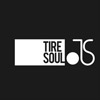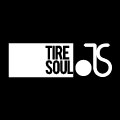We sell rubber strips obtained directly from tyres, what technically is called TYRE TREAD. The supply format, depending on quantities, could be 30x30x30 boxes up to 200x100cm pallets. We could also provide die-cut pieces with the shape that our clients request us.
(2) ¿WHAT IS A TYRE TREAD?
It is the exterior layer of the tyre that makes contact with the road. Once extracted, it is a tyre rubbers strap 180cm long and 14cm wide approximately. Those measures are not homogeneous, since, depending on the size and model of the original tyre, can vary slightly.
(3) ¿HOW MANY PAIRS OF SHOES CAN BE PRODUCED WITH EACH TYRE TREAD?
They can be made 3 to 4 pairs of shoes; it will depend on the foot shape.
(4) ¿IS THE LENGTH AND WIDTH OF ALL THE TREADS ALWAYS THE SAME?
No. The LENGTH ranges between 170cm and 220cm long and the WIDTH between 12cm and 17cm.
(5) ¿WHAT THICKNESSES ARE AVAILABLE?
Tyre treads WITH TEXTILE: Available any thickness between 2,5mm and 10mm
Tyre treads WITHOUT textile: Available any thickness between 2,5mm and 7mm
(6) ¿WHAT IS “THE TEXTILE” OF THE TYRE?
It is a layer of the tyre that is not visible, since it is below the rubber. It consists in nylon or aramid threads that reinforce the structure of the tyre. This layer reduces the elasticity of the tread to 20%, although it reinforces it structurally.
We can remove this textile so that the material is more flexible and easy to work for the footwear industry.
(7) ¿WHAT IS THE DIFFERENCE BETWEEN THE MATERIAL WITH TEXTILE AND THE MATERIAL WITHOUT TEXTILE?
The material WITH TEXTILE is more rigid and robust.
The material WITHOUT TEXTILE is much more flexible.
(8) ¿WHAT MODELS ARE AVAILABLE?
The summer model (model v) is the model we produce; although there are available some other winter models as limited editions. You have to consult in advance the availability of these editions.
(9) ¿WHAT IS THE MAXIMUM AMOUNT PER MODEL?
Currently, 120.000 units of the summer model (model v) and 25.000 units of the rest of the limited editions are obtained annually.
(10) ¿WHAT IS THE COMPOSITION OF OUR MATERIAL?
The base composition of the mixture is SBR, and it is specifically additivated to resist UV and ozone radiation, as well as to have excellent grip properties and wear resistance in any type of environmental condition; since, it is designed to keep the properties intact in extreme cold, heat, humidity, salinity, etc. conditions.
(11) ¿WHAT ARE THE MECHANICAL PROPERTIES OF THE MATERIAL?
In our technical data sheet appears the mechanical properties such as the hardness, abrasion, density, etc.
(12) ¿WHAT MANUFACTURING PROCESSES ARE COMPATIBLE WITH THIS MATERIAL?
The tyre treads rubber is fully compatible with other rubber products for the footwear sector.
So far, we have customers using gluing, stitching, stapling, vulcanizing and foxing processes.
(13) ¿IS IT NECESSARY ANY SPECIAL TREATMENT IN THE GLUING PROCESS?
The tyre sole does not need special processes in comparison to other rubber soles. We would use the same advice; sanding the rubber and/or applying halogen liquid on it would strengthen the gluing.
The halogen liquid is the impregnation recommended for the rubber. Each material has its own recommended impregnation to strengthen the gluing.
(14) ¿IS IT POSSIBLE TO SEW THE MATERIAL LIKE THE LEATHER?
Yes, as long as the thickness of the tyre sheet is less than 6mm.
(15) ¿IS OUR MATERIAL COMPATIBLE WITH THE MANUFACTURING OF SOLES OR/AND FOOTWEAR THROUGH VULCANIZATION? ¿WHAT THICKNESS IS MOST SUITABLE FOR THIS PROCESS?
Yes. It is compatible with both, the vulcanization of precast soles and the vulcanization of finished shoes.
For the precast soles, due to the high pressures that are reached in the vulcanization process, it is recommended to use low thicknesses, to avoid deformations during the process.
For the vulcanization of the finished shoes, since the used pressures are not as high as in the previous process, higher thicknesses can be used.
(17) ¿IS OUR MATERIAL COMPATIBLE WITH THE MANUFACTURING OF SOLES OR/AND FOOTWEAR THROUGH INJECTION PROCESS?
So far, has not been possible to make the tyre compatible with polyurethane injection. For injection of other materials, it is recommended to carry out previous tests to verify if they are compatible.
Our technical team can propose processes prior to the introduction of the piece in the mold to activate the joining surface.
(18) ¿WHAT ADVANTAGES DOES TIRESOUL HAVE OVER OTHER MATERIALS?
The main advantage is the use of the excellent properties of the tyre, resistance, grip and abrasion. In addition, it is a sustainable material, 100% recycled through a mechanical process, without thermal or chemical processes or tire shredding. It is environmentally friendly.
Using this material we are able to extend the lifetime of the tyres through an innovative recycling initiative, using it as a sole in our shoes.


